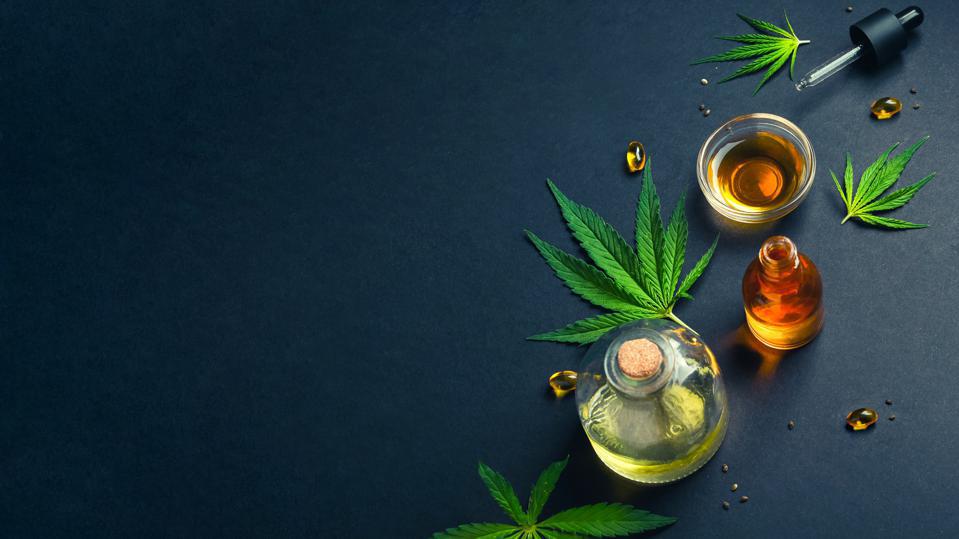
Medical Cannabis for Pain, Anxiety, and Sleep: What the Latest Research Reveals
1. Introduction
Medical cannabis has seen a dramatic rise in use throughout 2025. What was once considered a last-resort treatment has now become a mainstream option for people seeking relief from chronic pain, anxiety, and sleep disturbances. This shift is powered by stronger research, better product quality, and a growing understanding of how cannabis interacts with the human body.
Patients are increasingly looking for alternatives to long-term prescription medications—especially opioids, sleeping pills, and anti-anxiety drugs—which can cause dependency or harsh side effects. Medical cannabis offers a potentially safer, more natural solution, and doctors are now more open to recommending it when traditional therapies fall short.
But despite the growing popularity, medical cannabis is still widely misunderstood. This article breaks down the latest evidence in 2025 so you can decide whether medical cannabis might be an appropriate option for your health needs.
2. What Medical Cannabis Is
Medical cannabis refers to the regulated use of cannabis plants or their extracts to relieve symptoms of medical conditions. Unlike recreational marijuana, medical cannabis is prescribed for therapeutic purposes and is often lab-tested for safety and consistency.
The two key active compounds are:
THC (Tetrahydrocannabinol)
- Responsible for the “high”
- Effective for pain, nausea, and muscle spasms
- May help with appetite stimulation
CBD (Cannabidiol)
- Non-intoxicating
- Known for calming anxiety, reducing inflammation, and supporting sleep
- Widely used by patients who want relief without psychoactive effects
Medical cannabis products can be CBD-dominant, THC-dominant, or balanced, depending on the condition being treated.
3. How Medical Cannabis Works in the Body
Medical cannabis works by interacting with the endocannabinoid system (ECS)—a complex biological network that regulates mood, pain, inflammation, sleep, memory, and immune function. The ECS includes receptors located throughout the brain, nerves, and organs.
There are two major receptors:
- CB1 receptors: Primarily found in the brain and central nervous system
- CB2 receptors: Located mostly in immune system tissues
THC binds directly to CB1 receptors, altering pain perception and mood, while CBD influences CB2 receptors, helping regulate inflammation and stress responses. CBD also helps maintain ECS balance without producing a “high.”
When the ECS works properly, the body maintains a stable internal environment. Medical cannabis supports this balance, which is why it can improve symptoms for a wide range of conditions.
4. Science-Supported Benefits in 2025
Research in 2025 has provided stronger evidence for the effectiveness of medical cannabis across several conditions. Below are the most well-supported benefits.
Chronic Pain Relief
Chronic pain remains the most common reason patients seek medical cannabis. Several studies show that 55–65% of patients experience meaningful pain reduction when using cannabis, especially when combined with lifestyle changes or physiotherapy.
Types of pain showing improvement include:
- Neuropathic pain
- Arthritis and joint pain
- Fibromyalgia
- Cancer-related pain
Patients often report better daily functioning and less reliance on opioid medications.
Anxiety and Stress Reduction
CBD has shown strong potential as a natural anxiety reducer. Research in 2025 shows that CBD can help regulate serotonin receptors, improving mood and reducing physical symptoms of anxiety without sedation.
Patients commonly use CBD for:
- Generalized anxiety
- Social anxiety
- Panic symptoms
- Stress-related sleep disturbances
THC, when used in low doses, may also reduce anxiety, but higher doses can have the opposite effect—making dosage especially important.
Improved Sleep Quality
Medical cannabis can help people fall asleep faster and stay asleep longer. Low-dose THC is useful for nighttime relaxation, while CBD supports deeper, uninterrupted sleep by reducing pain and racing thoughts.
Some studies show a 30–40% improvement in sleep quality among patients with chronic insomnia.
Epilepsy
CBD-based medications have become standard for treatment-resistant epilepsy, especially in children. Many patients experience fewer seizures and reduced seizure intensity.
Cancer-Related Symptoms
Cancer patients often use medical cannabis to manage:
- Chemotherapy-induced nausea
- Appetite loss
- Pain
- Sleep problems
Cannabis doesn’t cure cancer, but it can significantly improve comfort and emotional wellbeing during treatment.

Inflammation
CBD’s anti-inflammatory properties make it helpful for conditions like:
- Crohn’s disease
- Ulcerative colitis
- Lupus
- Rheumatoid arthritis
These benefits come from CBD’s ability to regulate immune responses and calm inflammatory pathways.
5. Possible Side Effects and Safety Considerations
Medical cannabis is generally safe but not free of risks. Common side effects include:
- Dry mouth
- Drowsiness
- Mild dizziness
- Increased appetite
- Short-term memory issues
- Anxiety (from high-THC products)
Less common side effects:
- Rapid heart rate
- Paranoia
- Fatigue
- Nausea (from overuse)
Medication Interactions
Cannabis can interact with:
- Blood thinners
- Anti-seizure medications
- Sedatives
- Blood pressure medications
- Antidepressants
Patients should always discuss their full medication list with a doctor.
Signs of Overuse
- Feeling overly sedated
- Worsening anxiety
- Difficulty concentrating
- Persistent nausea
- Dependency on cannabis for daily functioning
Using cannabis responsibly—and with medical supervision—minimizes these risks.
6. What Doctors Want Patients to Know in 2025
Doctors emphasize several key points before patients begin medical cannabis treatment:
Start Low, Increase Slowly
Beginners should use very small doses—especially of THC. This helps prevent side effects and allows the body to adjust gradually.
Track Your Symptoms
Patients are encouraged to keep a daily log of pain levels, sleep quality, anxiety episodes, and mood. This helps doctors fine-tune treatment.
Know When It’s Not Working
Medical cannabis isn’t suitable for everyone. If symptoms worsen, if side effects persist, or if daily functioning declines, doctors may suggest alternative treatments.
Avoid Unregulated Products
Only purchase cannabis from legal, medical-grade suppliers. Unregulated products may contain unsafe contaminants or inaccurate THC/CBD levels.
Cannabis Isn’t a Cure-All
Doctors warn against viewing cannabis as a magic solution. It works best as part of a broader treatment plan.
7. Methods of Consumption in 2025
Patients have more options than ever for consuming medical cannabis:
Oils and Tinctures
Fast-absorbing, easy to dose, and ideal for daily symptom management.
Capsules
Offer consistent dosing and longer-lasting relief.
Vaporizers
Provide rapid relief without the harmful effects of burning plant material.
Edibles
Longer onset time (1–2 hours) but extended symptom control—great for nighttime use.
Topicals
Creams, balms, and gels for localized pain relief.
Transdermal Patches
Provide slow, steady absorption for chronic conditions.
Inhalers (New in 2025)
Precise, medical-grade dosing similar to asthma inhalers.
Choosing the right method depends on the condition, tolerance, lifestyle, and doctor recommendations.
8. Medical Cannabis Legal Landscape (General)
While laws vary globally, access to medical cannabis typically follows a similar structure:
- A consultation with a licensed medical professional
- Eligibility assessment based on symptoms and medical history
- Approval and registration with a medical cannabis program
- Purchase from licensed dispensaries or pharmacies
- Ongoing monitoring and follow-ups
Many countries now allow CBD products with low THC content, but high-THC medical cannabis often requires stricter approval.
9. Who Should Avoid Medical Cannabis
Some individuals should proceed with extra caution—or avoid cannabis entirely:
- Pregnant or breastfeeding individuals
- People with a history of psychosis or severe mental health conditions
- Patients with uncontrolled heart disease
- Individuals with a history of substance misuse
- Those on medications with strong interaction risks
Children and elderly patients require carefully adjusted doses under strict medical supervision.
10. Conclusion
Medical cannabis continues to grow as a trusted option for managing chronic pain, anxiety, and sleep disorders. With increasing research, improved product quality, and broader access in 2025, more patients are experiencing meaningful relief when other treatments fail.
However, medical cannabis is not a one-size-fits-all solution. Safe use requires medical guidance, proper dosing, and awareness of potential risks. If you’re considering medical cannabis, work closely with a qualified healthcare provider to ensure it’s the right fit for your health needs.
FAQS
Studies in 2025 show that medical cannabis can significantly reduce chronic pain, especially nerve, arthritic, and musculoskeletal pain. Many patients report improved mobility and reduced reliance on opioids. While not a cure, cannabis can offer meaningful relief when combined with other therapies and used under medical supervision.
Yes. CBD-dominant formulas are highly effective for reducing anxiety without the intoxicating effects of THC. CBD helps regulate stress hormones and supports emotional balance. Low-dose THC may help some patients, but high THC can worsen anxiety, making medical guidance essential for choosing the right product.
Medical cannabis can support better sleep by reducing pain, calming anxiety, and relaxing the nervous system. CBD aids deep sleep, while low-dose THC helps with falling asleep. However, long-term heavy THC use may disturb sleep cycles, so using medically recommended doses is important for safe, restorative sleep.
Possibly. Medical cannabis may interact with blood thinners, sedatives, anti-seizure medications, and certain antidepressants. These interactions can affect how your body processes medicine or increase drowsiness. Always share your full medication list with your doctor so they can determine the safest dosage and product for you.




